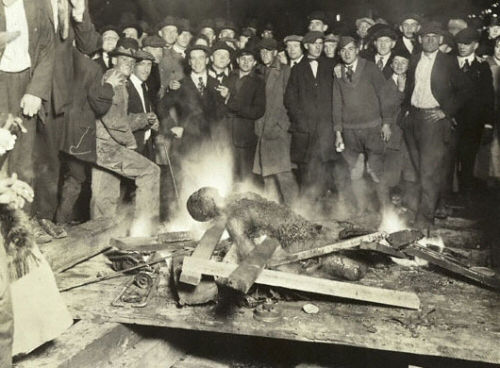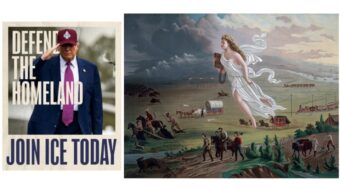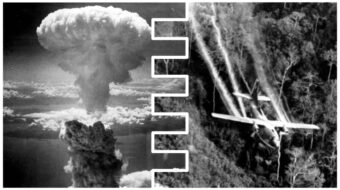
Recently, President Obama cautioned us not to judge the more than a billion and half Muslims from many places and cultures across the world, including the United States, by the actions of relatively few violent extremists. He went on to remind us that horrendous crimes have been committed throughout the ages by followers of virtually every religion, including Christianity. In what I would think of as in the true spirit of Christ he called for humility on the part of Christians in how they view Islam as a whole:
“Humanity has been grappling with these questions throughout human history. And lest we get on our high horse and think this is unique to some other place, remember that during the Crusades and the Inquisition, people committed terrible deeds in the name of Christ. In our home country, slavery and Jim Crow all too often was justified in the name of Christ.”
Of course, as we know, there was tremendous pushback from right-wing commentators on the Fox network, radio, the print press, and the blogosphere condemning the president as anti-Christian, anti-American, and pro-jihadist (and even, again, a secret Muslim). How dare he compare U.S. and European Christians to Islamic terrorists who viciously murder people in public spectacles?
However, another news story that recently emerged is a report of the Equal Justice Initiative of Montgomery, Alabama. This report is the result of intense research into what the Equal Justice Initiative calls “racial terror lynchings” in the South between the decline of Reconstruction, beginning in 1877, and just before the advent of the modern civil rights movement in 1950. The report documents almost 4,000 lynchings, many more than historians had recorded before.
While we are generally aware to some degree that such racial violence took place in the United States, the actual nature of lynching, its frequency, and its character has generally been left out of education in the United States over the last few decades, especially in the states where it was most often practiced. One aspect of lynching that was well known to African Americans before the civil rights movement (and, for many, after) was the horribly public nature of lynching. Lynchings were often a sort of sick festival where huge mobs of white people would gather, bring their children, have their pictures taken next to the victims, make souvenir postcards from the pictures, and even take pieces of the victims for souvenirs. The violence visited on the often completely innocent victims, most often black men, but sometimes women, was insane in the extreme, with the murdered often simultaneously hung, castrated, and set on fire. Such mad, but all too common incidents of public violence might well remind us of the burning of the Jordanian pilot by ISIS that has, rightly, elicited much horror.
As the scholar Amy Louise Wood reminds us in a very interesting book, Lynching and Spectacle (2009), a version of evangelical Christianity was very important in the justifying of these U.S. horrors:
“In these ways, the defenders of lynching borrowed the language of evangelical moral crusades to justify – and sanctify – their own crusades against black depravity. But the actual rituals of lynching also uncannily reenacted evangelical church practices, including confessions and testimonials, attention to torment and suffering, and the act of witnessing, practices that publicly rehearsed narratives of human sin and divine judgment.”
So, as President Obama, said (despite his ultra-right critics), U.S. Christians would do well not to stereotype Muslims on the basis of violence carried out by a small proportion of the Islamic world. As Jesus said, judge not lest ye be judged.
However, in the spirit of African American History Month, it is worth pointing out that the lynchings justified and self-righteously interpreted by a sick version of Christianity were even worse than the 4,000 horrible murders (that have been found so far) they entailed. As the Equal Justice Initiative report notes, these murders were a form of political terror. They were a key tool in the destruction of Reconstruction and its principles of a democracy in which race did not determine citizenship, by the segregationists who would lead the establishment of Jim Crow and the disenfranchisement of millions of black people in the United States. For example, such racial terrorism helped break the black and white coalition (the original fusion politics) that took over the state government of North Carolina in 1894, with the result that Jim Crow and black disenfranchisement dominated the state by the beginning of the 20th century.
As a result, democracy in the United States was severely damaged and deformed as the democratic advances of Reconstruction were largely destroyed by this terror. In short, as W.E.B. Du Bois argued many decades ago in Black Reconstruction, we missed a great chance to move forward, due in large part to the efforts of the 1 percent of that time. We feel the consequences in our politics even to this day, whether in the so-called red state-blue state divide, police violence against young people (and not-so-young people) of color, the school-to-prison pipeline that disproportionately affects young black people, and the increasing segregation and crisis of our public education system, just to name a relatively small number of the negative results of this violence and the so-called Christian terrorists who carried it out and justified it.
Photo: An African American lynched by a white mob in Omaha, Nebraska, Sept. 28, 1919. Wikimedia Commons










